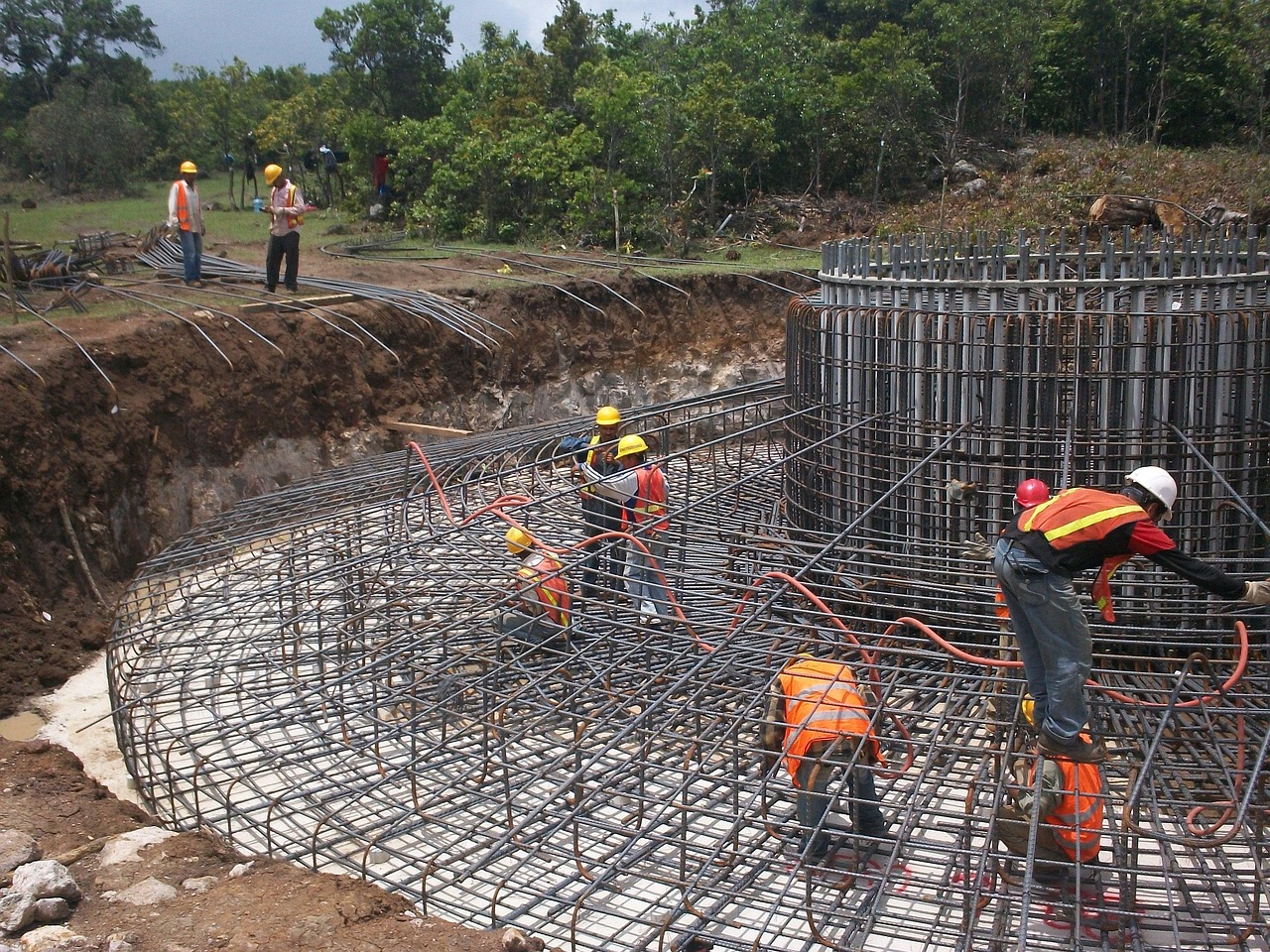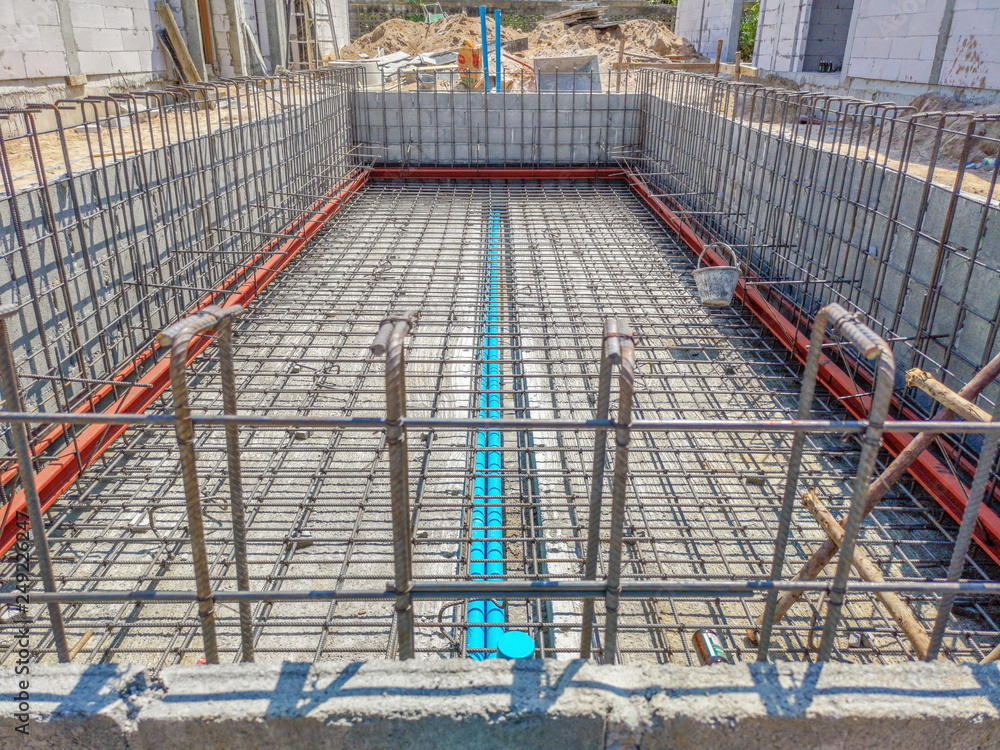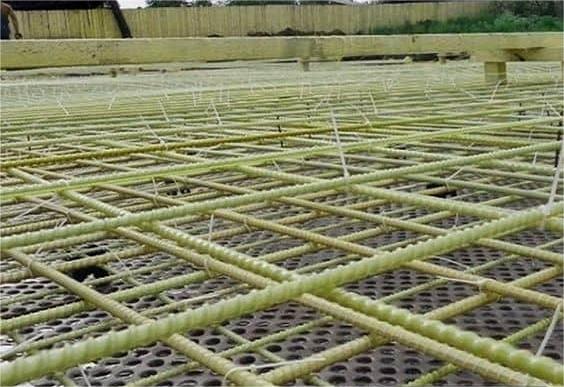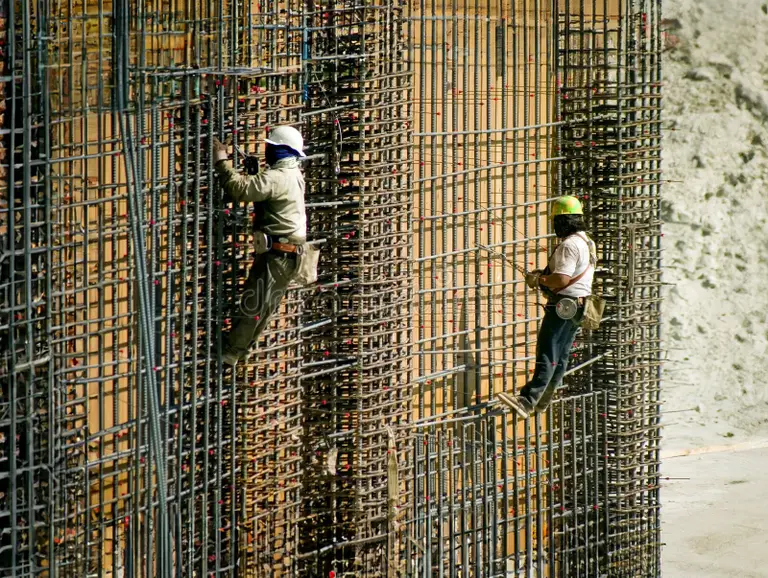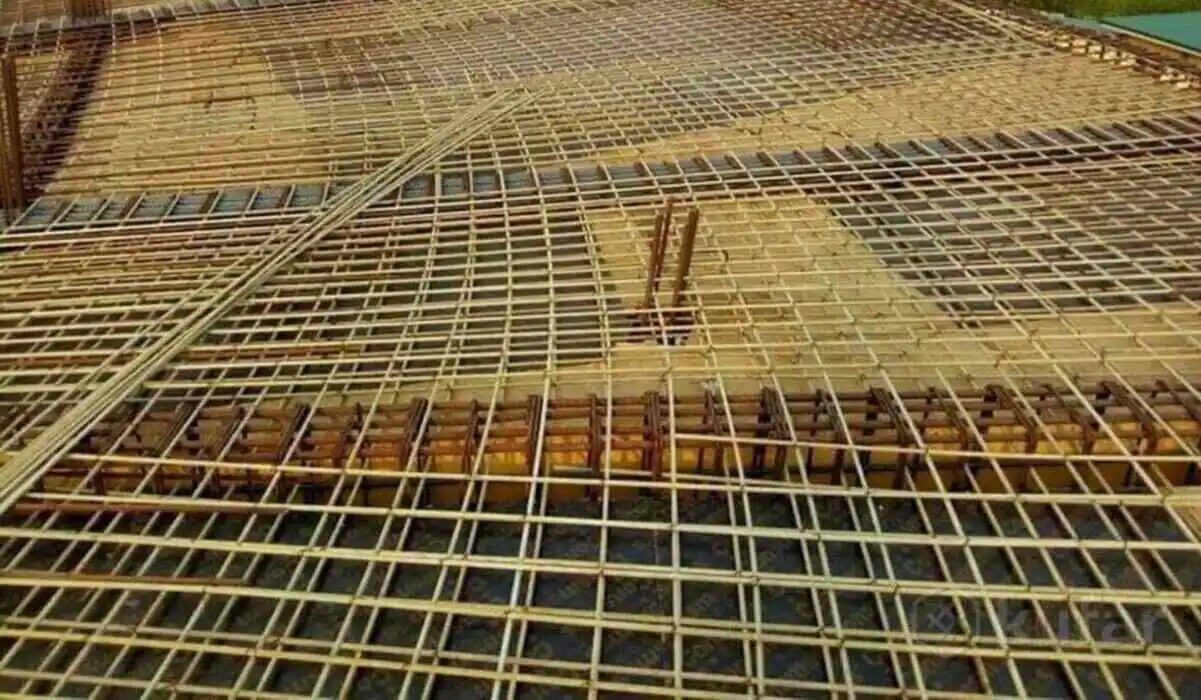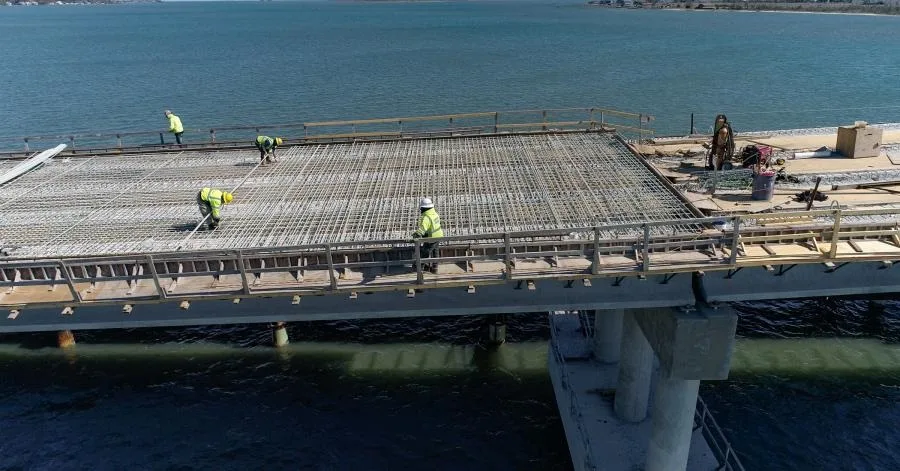We understand your needs on construction
Benifits
GFRP Rebar vs. Steel Rebar
Key Differences:
| Feature | GFRP Rebar | Steel Rebar |
|---|---|---|
| Corrosion Resistance | 100% corrosion-resistant (non-metallic) | Prone to corrosion, especially in harsh/chemical environments |
| Weight | Up to 75% lighter than steel | Heavy – increases transportation and handling costs |
| Magnetic Properties | Non-magnetic (ideal for MRI rooms, sensitive installations) | Magnetic – not suitable for electromagnetically sensitive applications |
| Thermal Conductivity | Low – better insulator, reduces thermal bridging | High – acts as a thermal conductor |
| Electrical Conductivity | Non-conductive – safer in electric installations | Conductive – may pose electrical hazards |
| Bond with Concrete | Excellent with sand-coated or surface-deformed variants | Excellent due to ribbed texture |
| Durability | High in aggressive environments (marine, chemical plants, etc.) | Reduces over time in corrosive environments |
| Cost (Initial) | Higher upfront cost | Lower upfront cost |
| Cost (Lifecycle) | More cost-effective over time due to no rust and lower maintenance | Higher lifecycle cost due to rust repair and maintenance |
| Installation Ease | Easier to cut and handle; no sparks, no special tools | Harder to cut; needs heavy-duty tools and safety precautions |
| Fire Resistance | Lower than steel; may degrade under extreme heat unless protected | Very good fire resistance |
| Environmental Impact | Eco-friendly; recyclable, non-corrosive | Can corrode and pollute; recyclable with energy-intensive processes |
| Standard Code Usage | Gaining acceptance in international codes (ACI 440, IRC, etc.) | Universally accepted and code-compliant worldwide |
Feature: Tensile Strength
GFRP Rebar: Higher tensile strength (1000(+) MPa)
Steel Rebar: Lower tensile strength (450-550 MPa depending on grade)
GFRP Rebar: Higher tensile strength (1000(+) MPa)
Steel Rebar: Lower tensile strength (450-550 MPa depending on grade)
Feature: Corrosion Resistance
GFRP Rebar: 100% corrosion-resistant (non-metallic)
Steel Rebar: Prone to corrosion, especially in harsh/chemical environments
GFRP Rebar: 100% corrosion-resistant (non-metallic)
Steel Rebar: Prone to corrosion, especially in harsh/chemical environments
Feature: Weight
GFRP Rebar: Up to 75% lighter than steel
Steel Rebar: Heavy – increases transportation and handling costs
GFRP Rebar: Up to 75% lighter than steel
Steel Rebar: Heavy – increases transportation and handling costs
Feature: Magnetic Properties
GFRP Rebar: Non-magnetic (ideal for MRI rooms, sensitive installations)
Steel Rebar: Magnetic – not suitable for electromagnetically sensitive applications
GFRP Rebar: Non-magnetic (ideal for MRI rooms, sensitive installations)
Steel Rebar: Magnetic – not suitable for electromagnetically sensitive applications
Feature: Thermal Conductivity
GFRP Rebar: Low – better insulator, reduces thermal bridging
Steel Rebar: High – acts as a thermal conductor
GFRP Rebar: Low – better insulator, reduces thermal bridging
Steel Rebar: High – acts as a thermal conductor
Feature: Electrical Conductivity
GFRP Rebar: Non-conductive – safer in electric installations
Steel Rebar: Conductive – may pose electrical hazards
GFRP Rebar: Non-conductive – safer in electric installations
Steel Rebar: Conductive – may pose electrical hazards
Feature: Bond with Concrete
GFRP Rebar: Excellent with sand-coated or surface-deformed variants
Steel Rebar: Excellent due to ribbed texture
GFRP Rebar: Excellent with sand-coated or surface-deformed variants
Steel Rebar: Excellent due to ribbed texture
Feature: Modulus of Elasticity
GFRP Rebar: Lower (~45–60 GPa) – more flexible
Steel Rebar: Higher (~200 GPa) – stiffer and more rigid
GFRP Rebar: Lower (~45–60 GPa) – more flexible
Steel Rebar: Higher (~200 GPa) – stiffer and more rigid
Feature: Durability
GFRP Rebar: High in aggressive environments (marine, chemical plants, etc.)
Steel Rebar: Reduces over time in corrosive environments
GFRP Rebar: High in aggressive environments (marine, chemical plants, etc.)
Steel Rebar: Reduces over time in corrosive environments
Feature: Cost (Initial)
GFRP Rebar: Higher upfront cost
Steel Rebar: Lower upfront cost
GFRP Rebar: Higher upfront cost
Steel Rebar: Lower upfront cost
Feature: Cost (Lifecycle)
GFRP Rebar: More cost-effective over time
Steel Rebar: Higher maintenance and rust repair cost
GFRP Rebar: More cost-effective over time
Steel Rebar: Higher maintenance and rust repair cost
Feature: Installation Ease
GFRP Rebar: Easier to cut and handle; no sparks
Steel Rebar: Harder to cut; needs heavy-duty tools
GFRP Rebar: Easier to cut and handle; no sparks
Steel Rebar: Harder to cut; needs heavy-duty tools
Feature: Fire Resistance
GFRP Rebar: Lower than steel unless protected
Steel Rebar: Very good fire resistance
GFRP Rebar: Lower than steel unless protected
Steel Rebar: Very good fire resistance
Feature: Environmental Impact
GFRP Rebar: Eco-friendly; recyclable, non-corrosive
Steel Rebar: Corrosive; recyclable with more energy
GFRP Rebar: Eco-friendly; recyclable, non-corrosive
Steel Rebar: Corrosive; recyclable with more energy
Feature: Standard Code Usage
GFRP Rebar: Gaining acceptance (ACI 440, IRC, etc.)
Steel Rebar: Universally accepted worldwide
GFRP Rebar: Gaining acceptance (ACI 440, IRC, etc.)
Steel Rebar: Universally accepted worldwide
Technical Characteristics
| Property | GFRP Rebar | Steel Rebar |
|---|---|---|
| Corrosion Resistance to Aggressive Environments | ✅ Non-corrosive | ❌ Corrosive |
| Corrosion Resistance | High (non-conductive) | Low |
| Electrical Conductivity | Non-conductive | Conductive |
| Thermal Conductivity | Low | High |
| Tensile Strength (MPa) | 1000+ | 550 |
| Compressive Strength (MPa) | 450 | 500 |
| Bond Strength to Concrete (MPa) | >12 | >15 |
| Modulus of Elasticity (GPa) | >=50 | 160 – 200 |
| Density (kg/m³) | 1900 | 7800 |
| Magnetic Properties | Diamagnetic | Magnetic Conductor |
| Durability | ≥ 80 years | As per building code; lower in corrosive areas |
Property: Corrosion Resistance to Aggressive Environments
GFRP Rebar: ✅ Non-corrosive
Steel Rebar: ❌ Corrosive
GFRP Rebar: ✅ Non-corrosive
Steel Rebar: ❌ Corrosive
Property: Corrosion Resistance
GFRP Rebar: High (non-conductive)
Steel Rebar: Low
GFRP Rebar: High (non-conductive)
Steel Rebar: Low
Property: Electrical Conductivity
GFRP Rebar: Non-conductive
Steel Rebar: Conductive
GFRP Rebar: Non-conductive
Steel Rebar: Conductive
Property: Thermal Conductivity
GFRP Rebar: Low
Steel Rebar: High
GFRP Rebar: Low
Steel Rebar: High
Property: Tensile Strength (MPa)
GFRP Rebar: 1300
Steel Rebar: 390
GFRP Rebar: 1300
Steel Rebar: 390
Property: Compressive Strength (MPa)
GFRP Rebar: 550
Steel Rebar: 400
GFRP Rebar: 550
Steel Rebar: 400
Property: Transverse Shear Strength (MPa)
GFRP Rebar: 220
Steel Rebar: 300
GFRP Rebar: 220
Steel Rebar: 300
Property: Bond Strength to Concrete (MPa)
GFRP Rebar: >20
Steel Rebar: >12
GFRP Rebar: >20
Steel Rebar: >12
Property: Ultimate Strain (%)
GFRP Rebar: 1.5 – 2%
Steel Rebar: 15%
GFRP Rebar: 1.5 – 2%
Steel Rebar: 15%
Property: Modulus of Elasticity (GPa)
GFRP Rebar: 65
Steel Rebar: 160 – 200
GFRP Rebar: 65
Steel Rebar: 160 – 200
Property: Density (kg/m³)
GFRP Rebar: 2100
Steel Rebar: 7800
GFRP Rebar: 2100
Steel Rebar: 7800
Property: Working Temperature Range (°C)
GFRP Rebar: –70 to +160
Steel Rebar: –70 to +50
GFRP Rebar: –70 to +160
Steel Rebar: –70 to +50
Property: Magnetic Properties
GFRP Rebar: Diamagnetic
Steel Rebar: Magnetic Conductor
GFRP Rebar: Diamagnetic
Steel Rebar: Magnetic Conductor
Property: Durability
GFRP Rebar: ≥ 80 years
Steel Rebar: As per building code; lower in corrosive areas
GFRP Rebar: ≥ 80 years
Steel Rebar: As per building code; lower in corrosive areas
